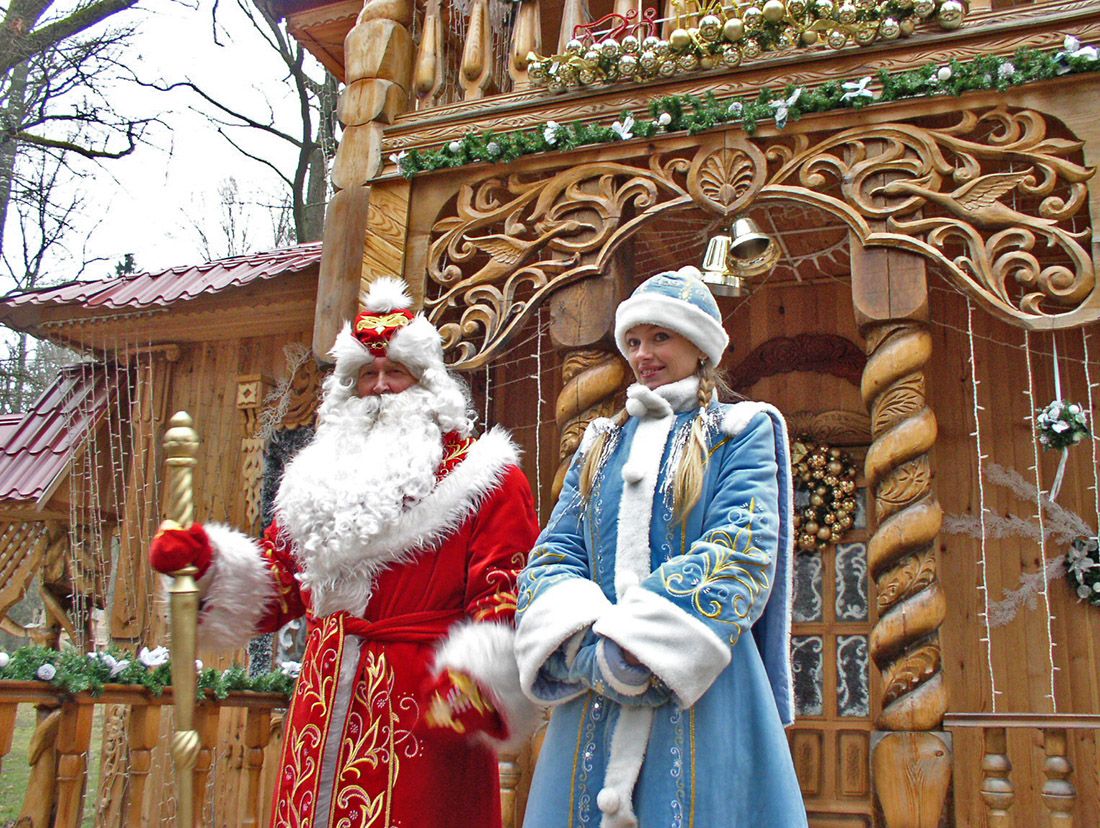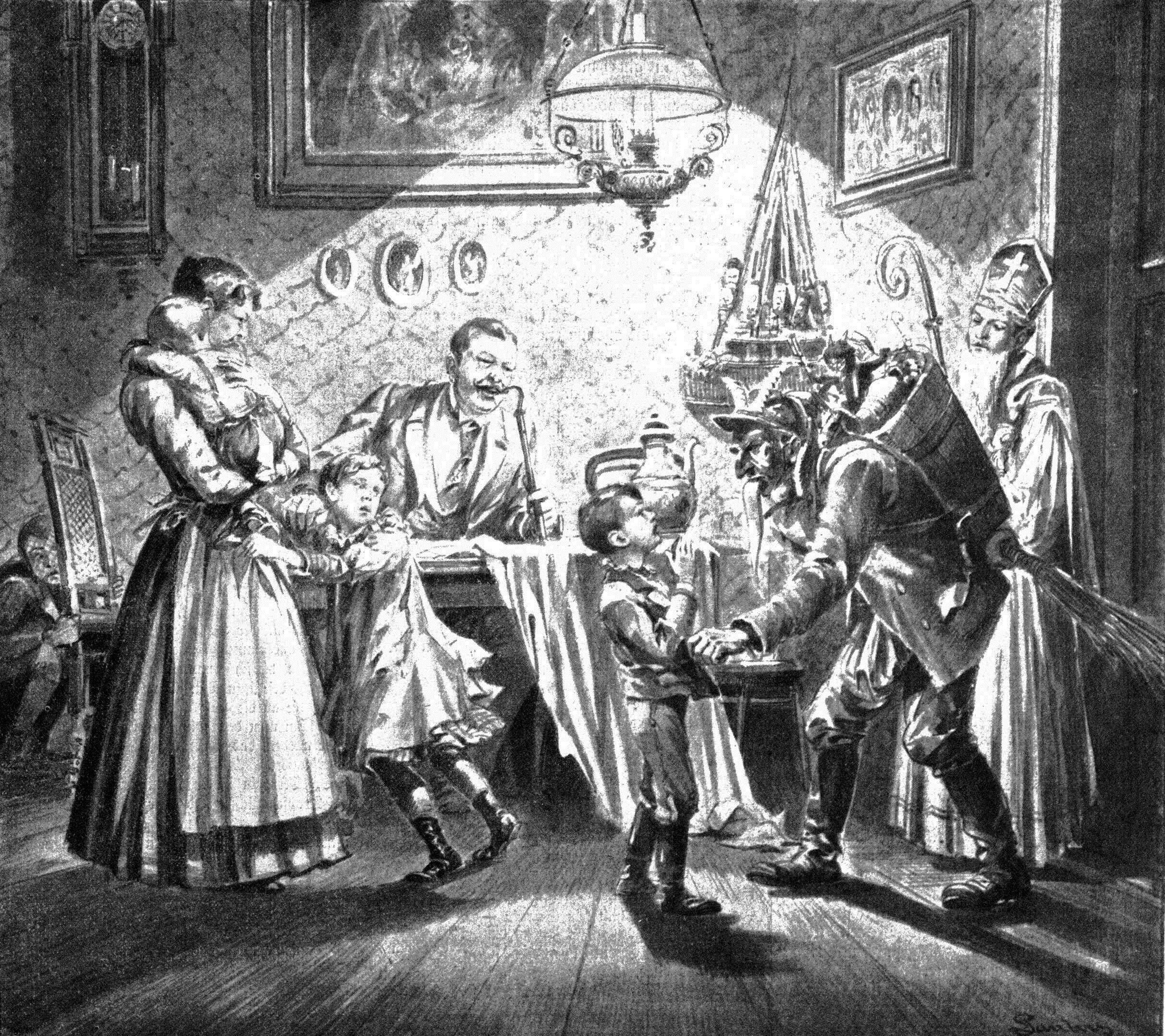In 1947, then Maison Blanche employee Emile Alline conceived of a snowman with an ice cream cone hat and holly wings to serve as mascot for the store during the holiday season. Since his creation, Mr. Bingle has gone on to become a part of New Orleans Christmas folklore, serving as an assistant to Santa Claus. This is just one example of the tendency of various cultures to create a Christmas character to help make the holiday season more identifiable to people. Whether it be their own version of Santa or a brand-new spirit only recognized by a certain group, the world has produced multitudes of characters to make the season more festive in their homelands.

Throughout the centuries, Christmas characters, mainly originating from all over Europe, have come about from the combination of pagan deity worship and Christian teachings. Arguably, the best-known and widest-spread type of these characters is the personification of Christmas itself. One of the most recognizable examples of a real-life person being associated with Christmas (at least to most of the Western world) is St. Nicholas. A 3rd-century Greek bishop from Myra (in what is now Turkey), St. Nicholas is known now by his charitable reputation as a gift-giver to poor families. The story goes that a wealthy man lost his fortune and couldn't afford dowries for his three daughters. St. Nicholas heard this and, either too shy to approach them or not wanting to embarrass the family in public, threw purses of gold coins for each daughter through an open window in their house in the middle of the night. Whether or not this story is actually historically accurate, this image of a kind gift-giver secretly visiting families at night was forever cemented in pop culture. While St. Nicholas is a Christmas icon for most, some countries actually associate the season with different saints. For Greece, St. Basil of Caesarea, a 4th-century bishop again from modern-day Turkey, is said to have been born into wealth and given all of his possessions to those in need. He's rumored to have brought children gifts every January 1, and Greek families traditionally eat vasilopita (baked bread with a coin inside) as a way of commemorating him. Interestingly, some countries in Central Europe celebrate a "version" of St. Nicholas that aligns more with their culture. In Hungary, the Czech Republic, and Slovakia, Nicholas becomes "Mikulás" and brings gifts, vegetables, or coal to kids on December 6 (Hungarian children are supposed to leave a boot on their windowsill so Mikulás can fill it). Another rendition of St. Nicholas is Sinterklaas, who is popular in the Netherlands, among the Flemish population of Belgium, and in some of the other Dutch-speaking parts of the world.
The other famous type of Christmas personification is that of the Americanized version of Santa Claus, which had a profound effect on how other countries viewed their particular gift-giving, folkloric figures. All throughout Europe, there are different incarnations who share some similar aspects with what we perceive as Santa. In France and other French-speaking areas, Père Noël, or Papa Noël, visits children on Christmas Eve (Cajuns typically have Papa Noël on a boat pulled by alligators). Father Christmas appeared as a separate character in England after the English Civil War in 1652, until he started adopting traits of Santa in the late-Victorian 1800s. Russia has a character named Ded Moroz (literally, Grandfather Frost) who originally started out as a demon or a wizard, but eventually became a white-bearded man in a long fur coat and felt boots, carrying a magic wand.
There are also other gift-giving characters who are completely separated from both St. Nicholas and Santa Claus. When the Protestant Reformation swept through Europe in the 16th century, many German-speaking countries started to adopt a figure called the Christkind (who's symbolic of Jesus as a child) as a way of giving the season a more Christian leaning. In Italy, children are visited on Epiphany by an old witch named Befana who comes in through the chimney, leaves candy and gifts, and then sweeps up the floor with the broomstick she rides on. Southern Germany has a crabby, dirty-looking old man character named Belsnickel who has a bag of sweets for good kids and a switch for bad ones.

Just as interesting as the many variations of St. Nicholas and Santa Claus are the characters that were created to serve as companion figures, like the elves who build toys in the North Pole. One particularly famous and demented icon is Krampus, who is known in Central European countries such as Germany, Austria, Hungary, and Croatia. He is a goat demon with a long tongue who accompanies St. Nicholas in order to stuff naughty children into his large bag to either eat later or bring to hell. In the Netherlands, Sinterklaas is usually accompanied by a character named Zwarte Piet, who's supposed to be a black Moor from Spain who gives out candy to kids for the Feast of St. Nicholas. This character is often a source of controversy because he was traditionally (and sometimes still is) portrayed by people wearing blackface. In Russia, Ded Moroz is usually joined by his granddaughter Snegurochka (whose name means Snow Maiden).
There are too many Christmas folklore characters to count, each weirder and more unique than the last, such as the Icelandic Yule Cat who eats people when they don't get new clothes before Christmas Eve, or Caganer, a Catalan figurine character whose only purpose is to poop on the ground in a nativity scene. No matter how differently or similarly we may picture Christmas, it's just nice to know that we're all around to celebrate it together in this big, crazy world.

